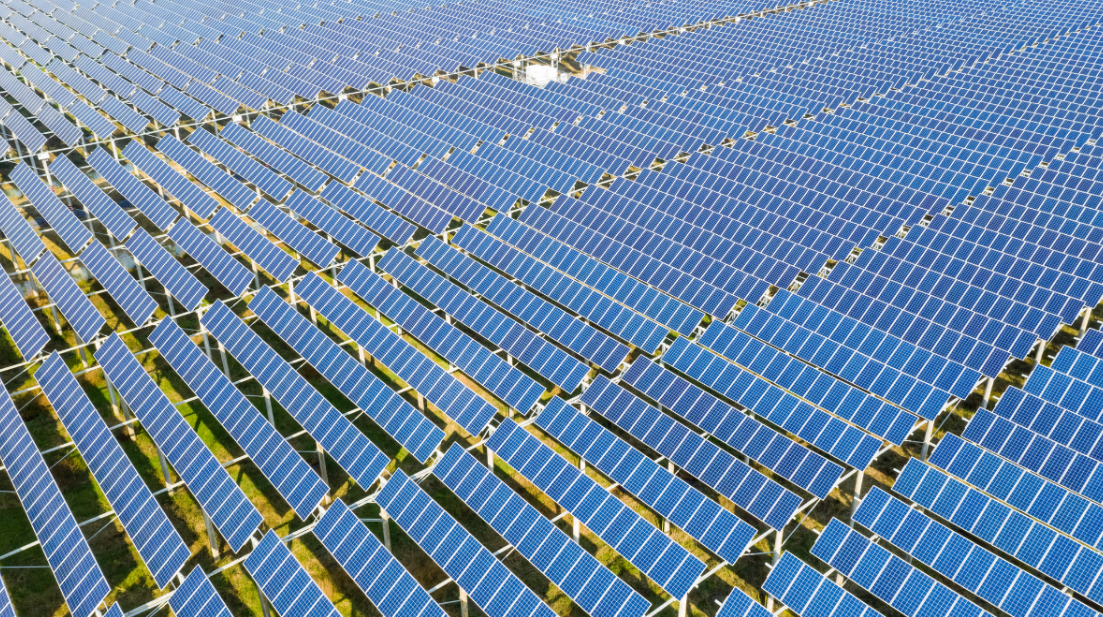
The solar energy capacity in India exceeds 100 GW and serves as crucial progress toward achieving its renewable energy target of 500 GW by 2030. The renewable energy capacity of India has reached 100 GW where solar power stands as the principal contributor at 47% thanks to the PM Surya Ghar Muft Bijli Yojana together with the Solar Parks Scheme and Production-Linked Incentive (PLI) Scheme.
Milestone achievement of Solar Power Capacity in India
-
In January 2025, India surpassed 100 GW of solar power distribution throughout its territory.
-
Indian leadership in renewable energy has gained further strength because of this accomplishment.
-
Non-fossil fuel capacity expansion to 500 GW by 2030 receives substantial backing from this development.
-
The country surpassed Japan to claim the position of third-largest solar power producer during 2023.
-
The total solar power production in India exceeded Japan’s output by 3 billion units reaching 113 billion units.
-
The nation currently holds the fifth position worldwide regarding power capacity installation where solar capacity stands at 73 GW.
Growth Trends in Solar Installations:
-
Solar energy capacity in India experienced an enormous expansion over twelve years that increased 3,450% from its starting value of 2.82 GW in 2014 to reach 100 GW in 2025.
-
The solar power market recorded its most significant additions totaling 24.5 GW in 2024 which surpassed the previous year by 100 percent.
-
Major solar power-producing states: Rajasthan, Gujarat, Tamil Nadu, Maharashtra, and Madhya Pradesh.
Government Initiatives Driving Solar Growth:
-
PM Surya Ghar Muft Bijli Yojana (2024) has successfully promoted rooftop solar installations to reach 9 lakh total units.
-
Solar Parks Scheme: Establishing large-scale solar energy clusters across India.
-
PLI Scheme for Solar Manufacturing:
-
Between 2014 and 2024 India developed its solar module production capability from 2 GW to 60 GW capacity.
-
India aims to double its solar module manufacturing capacity to 100 GW by 2030 for reducing foreign dependence on imports.
-
Contribution to Renewable Energy Goals:
-
Solar energy represents 47% of the total installed renewable capacity throughout India.
-
The deployment of solar energy systems lowers both carbon pollution in the atmosphere and improves national energy stability.
-
India’s sustainability targets and green energy transformation receive backing through this initiative.
Conclusion
India’s remarkable progress in solar energy showcases its commitment to sustainable development and energy security. Thanks to ongoing investments together with governmental policy backing India will achieve world-leading status in solar power leading to its rapid sustainable development.




 World Day of Social Justice celebrated on 20th February: India’s Commitment to Equity and Inclusion
World Day of Social Justice celebrated on 20th February: India’s Commitment to Equity and Inclusion Project Asiatic Lion: Conservation Efforts & Population Growth
Project Asiatic Lion: Conservation Efforts & Population Growth India’s Climate Action: Policies, Renewable Energy & Conservation
India’s Climate Action: Policies, Renewable Energy & Conservation Gujarat’s First Biodiversity Heritage Site: Inland Mangrove Guneri in Kutch
Gujarat’s First Biodiversity Heritage Site: Inland Mangrove Guneri in Kutch Paraquat Poisoning and Its Lethal Nature
Paraquat Poisoning and Its Lethal Nature PM Modi Congratulates Indore and Udaipur on Joining List of 31 Wetland Accredited Cities Globally
PM Modi Congratulates Indore and Udaipur on Joining List of 31 Wetland Accredited Cities Globally NGT Directs Uttar Pradesh to Report Progress on Dhanauri Wetland Protection in Four Weeks
NGT Directs Uttar Pradesh to Report Progress on Dhanauri Wetland Protection in Four Weeks Powerful 6.8 Magnitude Earthquake Strikes Tibet, Leaves Destruction in Its Wake
Powerful 6.8 Magnitude Earthquake Strikes Tibet, Leaves Destruction in Its Wake Union Shipping Ministry Great Nicobar Island Project
Union Shipping Ministry Great Nicobar Island Project






